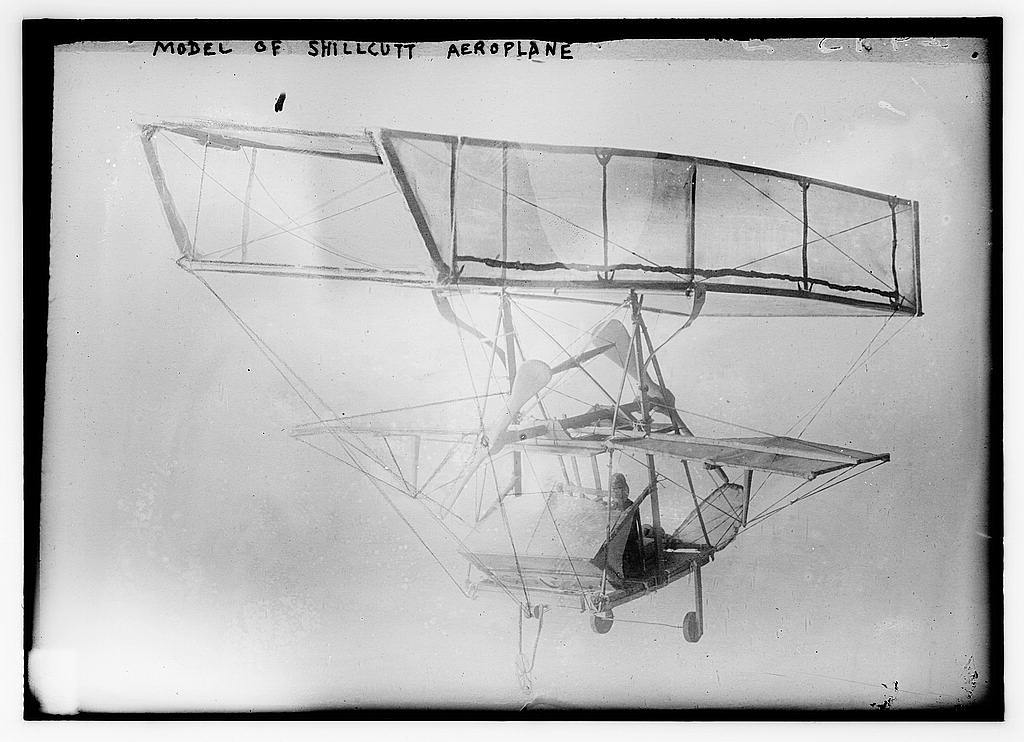
In 1911, French brothers Arthur-Édouard and Raoul-Georges Gonnel developed and tested the Uniplan: an aircraft design that can only be called strange.
Their “Uniplan” looked more like a kite than a plane. The Uniplan was not successful at flying, but it did demonstrate important aerodynamic concepts and principles that apply to modern piston and jet engine-powered aircraft today.

The Uniplan aircraft design featured an open fuselage, a compact engine mounted above a pair of wheels, and seating for a single pilot. Positioned above the lower fuselage was a boxlike frame of equal length, covered in fabric that draped down each side to form simple wings or fins.
Uniplan Aircraft Design Different and a Bit Strange
By any measure, the Uniplan was a unique aircraft design. Some claimed it was a cross between a covered wagon and a nun’s wimple [bonnet]. A 2010 edition of the Incas Bulletin refers to the Uniplan as the “strangeness” and “a kind of canvas boat rolled over the fuselage.”

The Uniplan was 23 feet long and 10.8 feet high and featured a wingspan of 10.5 feet. Its maximum weight was about 600 pounds. It initially had a 28-horsepower 2-cylinder Velox-Suére engine. The Gonnels built an updated model with a new fuselage and larger 4-cylinder 50-horsepower Velox-Suére engine. The design also seemed to lack steering capability.
French Inventors Receive Patent for Their Idea
Despite the Uniplan’s unusual design, the brothers demonstrated their seriousness by securing a French patent in 1910. Still, they seemed to recognize early doubts about the aircraft’s performance. Their patent application noted that the fabric wing—or dome—might act like a parachute, acknowledging that “the lift in flying machines leaves much to be desired.”
They decided to test the Uniplan in March 1911 and hired a pilot with the last name “Pappaert” to fly it. He allegedly did not have an official pilot’s license, but that might not have mattered. There is no clear evidence that the design worked. A January 1912 issue of the French newspaper “L’Auto” reported that Pappaert made “many flights” in the Uniplan that January, but no other records of his alleged flights exist. Others claimed these flights were no more than uncontrolled hops.

Aerodynamic limitations likely explain why the Uniplan failed to fly successfully. Its long, fabric-covered upper frame paired with very short wings reflects a low aspect ratio design—meaning the wings were relatively short in span compared to their length. This configuration tends to generate strong wingtip vortices and contributes to instability in flight. While some modern fighter jets also have low aspect ratios, they compensate with powerful engines that provide enough thrust to overcome these aerodynamic drawbacks.
French Design For Low Aspect Ratio Plane

In the early 20th century, the Uniplan was not the only unique or unusual aircraft design with a low aspect ratio. In 1908, Frenchman Camille Delalandre designed the “Irreversible.” It was similar to the Uniplan and not any more successful. Delalandre tested it in June 1914, and it crashed. Then, when World War 1 began, he did not continue with the project.

American Design Similar to French Uniplan

The French were not the only aircraft designers interested in low-aspect planes. In 1912, American Alburt Shillcutt designed his own aircraft, the “Shillcutt Aeroplane.” While similar in appearance to the Gonnel Uniplan design, Shilcutt’s plane had two engines that drove two propellers, one forward and one in the rear, on a single shaft. Like Gonnels, Shillcutt applied for and received a patent, number 1,043,473, in 2012. Unfortunately, like with the Gonnels and Delaandre, Shilcutt’s aircraft design was unsuccessful. There is no evidence that it ever went beyond model form.

While these low aspect ratio aircraft designs may not have been competent fliers, it does seem likely that they at least help engineers learn more about wing design and aerodynamics.







